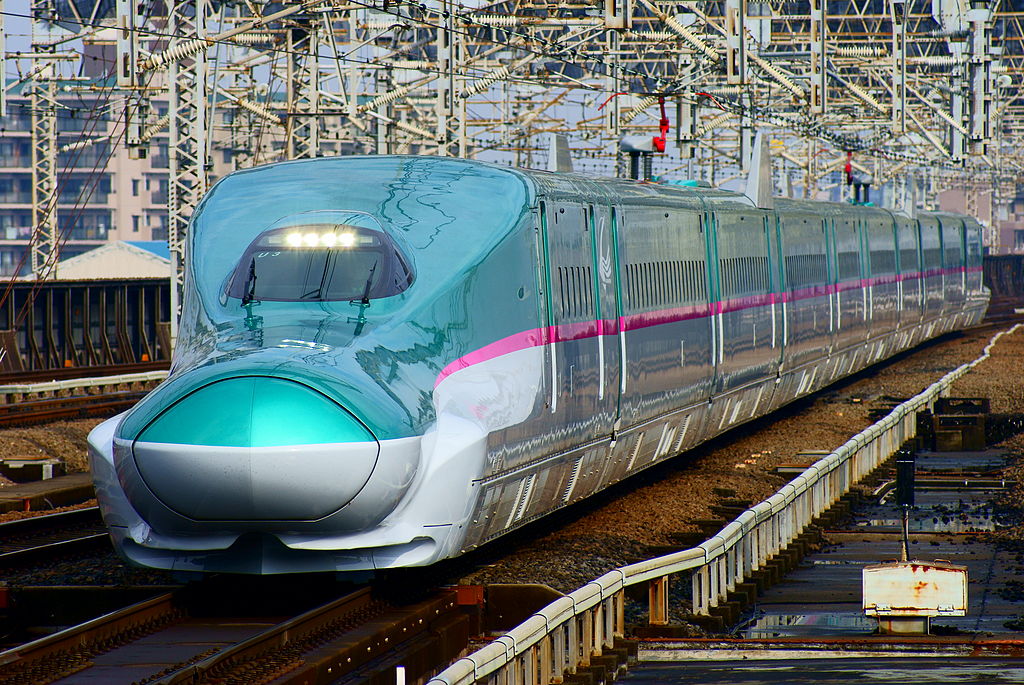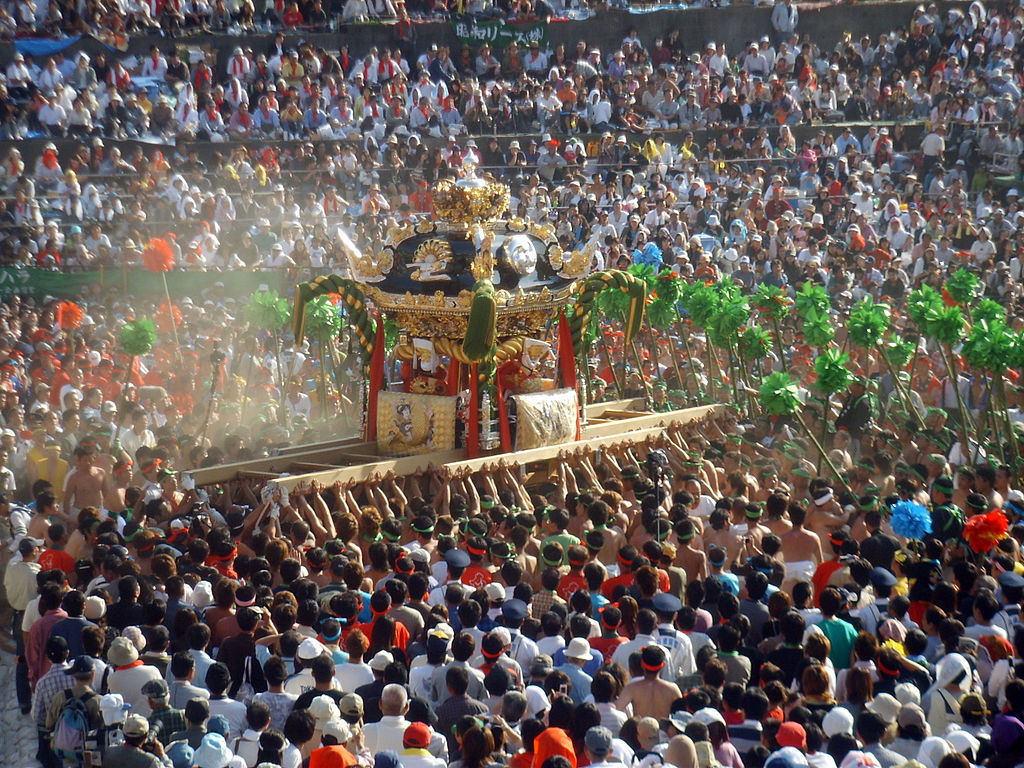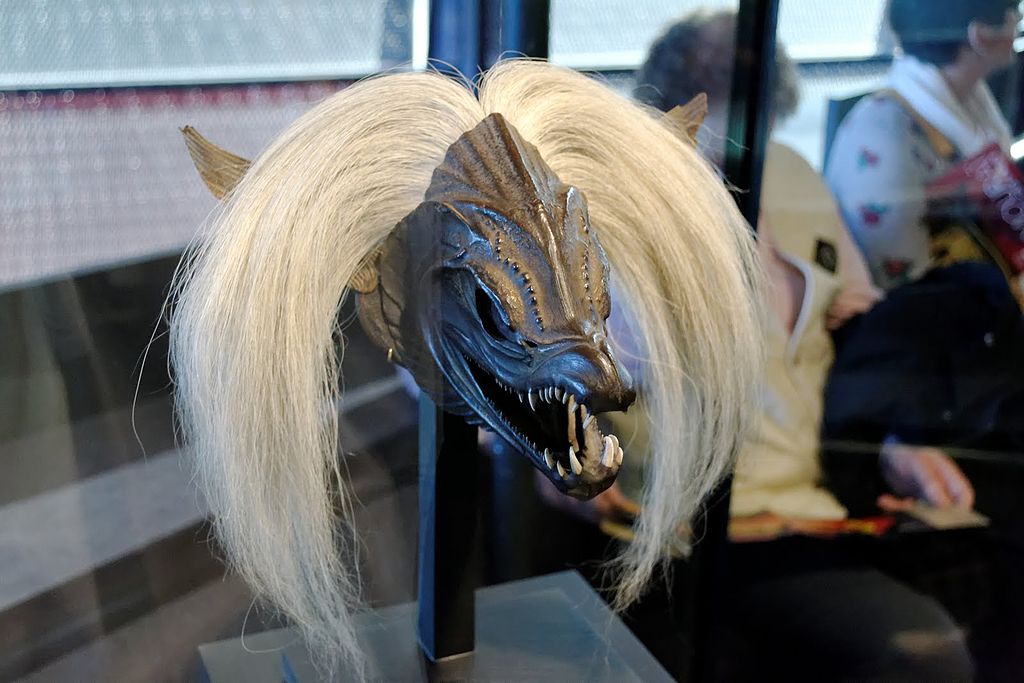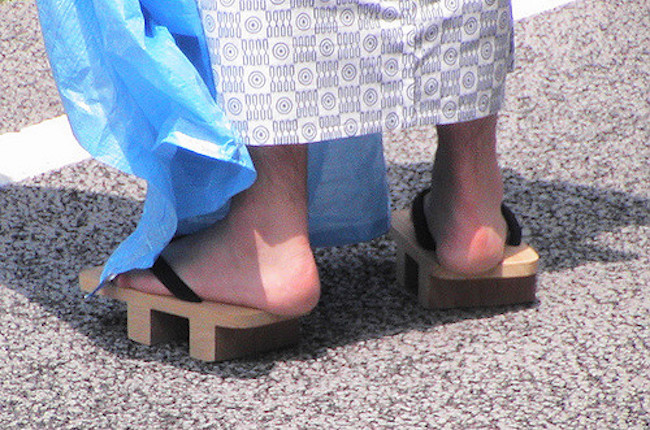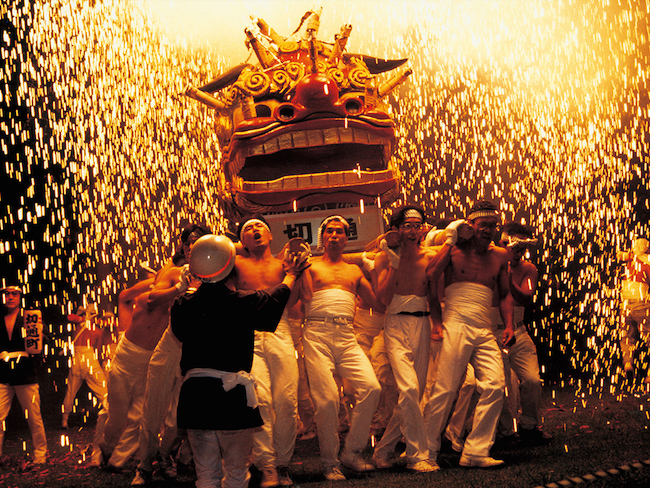Mar 23, 2018
Top Tips for Traveling Around Japan

As Japan has so much to offer, it’s worth taking a trip to see different parts of the country. If you speak only a little or no Japanese, the prospect of such a journey can be daunting. However with the right planning, you can visit any destination from touristic cities to lesser-known spots.
1. Take Advantage of a JR Pass
With a JR Pass, foreigners entering Japan for sight-seeing can travel around the entire country at a discount. You can purchase a pass for seven, 14, or 21 days to best fit your travel plans. With the pass, you pay nothing for travel on most trains (including bullet trains) as well as some local buses, ferries, and subways lines in major cities.
2. Save Even More by Taking a Bus
To save even more money, or if you’re in Japan as anything other than a temporary visitor, traveling by bus is an option. Buses are far cheaper than trains, but as they take much longer, they are best for reasonably short distances.
3. Fly at a Discount Rate
As a foreigner, you can save money on plane tickets by booking domestic flights while you’re still outside Japan. If you want to visit the extremes of the country, this is definitely your best option.
4. Plan to Spend in Cash
Make sure you arrive with plenty of cash or a plan to withdraw from an ATM as many places you may expect to take credit cards do not. You can usually find ATMs that accept foreign cards in 7-Eleven convenience stores and post offices.
Also bear in mind that currency from ¥1 to ¥500 is in coin form. Come prepared with a coin purse.
5. Translate the Menu
There’s no need to limit yourself to places that offer a menu in English. Besides, this may be difficult in some parts of the country — and it could mean that you miss out on great local dishes. Download an app like WayGo and you’ll be able to read any menu. Having such an app will also be helpful in other situations when you need translations.
5. Rent a Pocket WiFi
A pocket WiFi will ensure that you have a reliable, high-speed Internet connection wherever you go, even in remote areas. As well as making your trip more comfortable, this is key for being able to translate signs and check a map to ensure you don’t get lost, especially if you don’t read kanji.
6. Check Out Convenience Stores
Japanese conveniences stores are called konbini. You’ll find that they have everything you need, whether you want a quick snack or a lunch, personal care products or batteries. Plus, if you decided to forgo the pocket WiFi, they’re a top place to find free Internet.
Alternatively, you can find many essentials from vending machines. These dispense foods ranging from toasted sandwiches to instant noodles as well as items like umbrellas and gloves.
If you’ve never visited Japan before, be ready for a culture shock. With so much to take in, it’s best to avoid rushing. Avoid trying to do too much and you’ll get much more out of your trip.
By Nanashinodensyaku (Own work) [CC BY-SA 4.0], via Wikimedia Commons
Mar 23, 2018
8 Most Popular Hiking Tours in the Kansai Region

One of the best ways to enjoy a new place is to walk around and visit the attractions. But if you’re up for adventures that take hours of marveling beautiful landscapes and historical sites, it calls for leisurely hikes along popular trails and pilgrimage routes. Many countries boast of the best and most scenic trails that takes hours or even days to explore. Japan is one of these countries that offers the most spectacular views.
You must research what trails will suit you and your companions if you’re planning to take a hike to a place you’ve never been to before. Careful planning and preparation is also a must for hikes that are not so leisurely and sometimes a bit tricky and arduous. You must be ready physically and have the appropriate supplies to take with you, especially if there’s someone who has a health condition who’s psyched to conquer those trails. Some people who have ailments and the elderly join pilgrimages to religious and historical places for divine intervention to cure them and bless them with a longer life.
The Kansai region of Japan has one of the the most scenic and breathtaking trails for adventurers who want to go beyond normal and touristy sightseeing. Where nature meets history and culture thus providing an avenue for relaxation as well as learning and fun. These are just a few of what the region has enthralled and excited the world with with its awe-inspiring beauty and splendor.
Nunobiki Falls
Considered as one of the greatest divine falls, it has been an inspiration in the country’s literature and the arts. The Ontaki, Mentaki, Meotodaki and Tsutsumigadaki are the 4 different falls comprising it. There’s also an herb garden and observation deck that gives you a majestic view of the Kobe skyline after dark. This trail is easy and it is accessible via the Shin Kobe Station.
Kumano Kodō
For the past 1000 years, pilgrims from all walks of life including nobles of the past generations have survived these routes and paid homage to the deities in this religious destination. You’ll walk up to the Kumano Grand Shrines and Oji shrines and follow through different routes such as the Nakahechi, Kohechi, Ohechi and the Iseji. These pilgrimage routes were awarded as a UNESCO World Heritage site and are a part of the “Sacred Sites and Pilgrimage Routes in the Kii Mountain Range”.
Inunakisan Mountainous Area Hiking Tour
If you’re in Japan to experience relaxation and spiritual fill, here’s another tour that you must experience. The Inunakisan mountain is famous for the spiritual place of the Shugen-do or Japanese mountain asceticism. Its history dates back 1,300 years ago and is one of Japan’s oldest sacred places. Along the way to the Shipporyuji Temple, an important structure in the area, are the 48 large and small waterfalls . It was awarded as one of the Top 100 Greenery sites in Osaka Prefecture as it boasts beautiful valleys, forests, hot springs and the network of sacred falls.
Mount Yoshino
Japan is practically a cherry blossom country and people from around the world look forward to visiting when these trees are in full bloom. This trail to the mountain slopes of Nara Prefecture is the country’s most famous cherry blossom spot showcasing 30,000 cherry trees forming a mantle along the mountain sides. You can walk follow the trails around the slopes and enjoy the falling petals and the crisp mountain breeze.
Kibune and Kurama, Kyoto
Situated in the mountainous parts of rural Kyoto, Kurama and Kibune are home to some of the ancient shrines in the country. It only takes a day to explore but you’ll certainly enjoy the quaintness and mystery of the mountains and secluded trails as you traverse down off beaten paths. After a long hike around the sacred shrines and trails, you may want to take a dip in the tepid waters of the Kurama Onsen that draws its water from Mount Kurama.
Mount Kōya
This mountain is the world headquarters of a sect of Japanese Buddhism known as Kōyasan Shingon founded by Kūkai or revered posthumously as Kōbō-Daishi. There’s a university for religious studies and 120 temples with some of them offering lodging to pilgrims who visit. Other famous sites include the Okunoin where the mausoleum of the monk who founded the sect is located, Danjogaran where the important infrastructures are, Kongōbu-ji, the head temple, Kōyasan chōishi-michi or the trail that leads up the mountain. This is one of the UNESCO Heritage sites that is a part of the “Sacred Sites and Pilgrimage Routes in the Kii Mountain Range”.
Mount Hiei
If you’re a fan of the Corvette then you are familiar with Hiei, which was commissioned for the Imperial Japanese Navy in the 19th century. That car was named after this mountain that was also famous for the siege led by Oda Nobunaga who razed the temple complex of the Tendai monks. The edifice was restored and is still the home of these monks that are known as the marathon monks who walk for 1000 days in the course of seven years to attain enlightenment. The same distance as walking around the earth. Hikers go up the trails to visit the different attractions especially the temple complex, Enryaku-ji.
Yamanobe-no-michi Trail
The country is rich in history, culture and religious faith so it is proper to mention at least one of the attractions where it possibly began thousands of years ago. According to the earliest stages of Japan’s recorded history, this trail is Japan’s oldest road. You’ll also be led to the O-miwa Jinja, Japan’s oldest shrine, that dates back to the reign of the first emperor Jimmu who ruled from 660 B.C. to 585 B.C. There is no deity enshrined in this temple because the entire mountain Mt. Miwa is the object of worship.
The historical relevance that lies on top of the mountains, between the valleys, and along the mountainsides helps you appreciate what nature is protecting and what religion is either worshiping or nurturing. It’s always amazing to experience the mystery, drama and nostalgia that is hidden in these works of art.
By Alpsdake (Own work) [CC BY-SA 4.0], via Wikimedia Commons
Mar 23, 2018
5 Most Popular Festivals to Check Out in the Kansai Region

There’s always a famous festival in every country that draws pilgrims, tourists, the one-time visitors and even locals. There’s that exhilarating energy that wafts in the air when you hear the drums booming, the music blaring, the dancing, the merriment and all the energy that is ablaze every time there’s a feast.
Festivals are reminders that entertainment in communities is something that should be preserved so that their identity will survive. There are meat festivals, beer festivals, tomato festivals and hot air balloon festivals that are associated with the specialty dishes, drinks and industries that these places are known for. There are festivals with plays and dancing that pay tribute to literature and the arts. Celebrations like festivals are always fun and nostalgic enticing people from all walks of life to flock to these events.
A lot of festivals are religious in nature and in countries like Japan where religion is a stronghold, people flock to different cities to worship and pay homage to deities and sacred symbols. Celebrating their traditions every year helps their culture survive during this time when technological innovations are quickly absorbed by the new generations and influences them in their personal beliefs. Despite the signs of the times, it’s amazing that a lot of people still participate in the merriment and commemoration.
The Kansai region celebrates their festivals or Matsuris in certain months of the year and encourages locals and tourists to watch or even participate in the activities. These are some of the popular events that you can look forward to if you visit during the months that they celebrate them.
Minato Kobe Fireworks Festival
The reason why Kobe is said to be one of the 3 best night views in Japan is because every first Saturday of August, the sky bursts into a spectacular work of art as over 10,000 to 15,000 fireworks light up the sky and paint colorful tapestries on the water. You may view the event at Meriken Park or in the different hotels and spots around the bay. Although bad weather can postpone the event, this does not dampen the spirits of the locals and tourists who still show up to the new date and gather in crowds to watch the night sky burst into kaleidoscopic sparkling lights. It is a fireworks festival that commemorates the opening of the Kobe port, the fourth busiest port in Japan.
Tenjin Matsuri, Osaka
Ranked as one of Japan’s top 3 festivals, it begins on the 24th of July and ends on the 25th, the following day. It’s has been around for more than 1,000 years and is famous as the world’s greatest boat festival. Held every summer at the Osaka Tenmangu Shrine dedicated to the patron god of learning and art, Sugawara-no-Michizane who lived between 845 to 903 and became Tenman Tenjin, whose name the festival takes from. The 2 day event comprises of a land procession participated by around 3,000 people parading in imperial court style regalia from the 8th to 12th century and walking beside portable shrines. These participants board around 100 boats near the Tenmabashi bridge and sail onwards. The boats are illuminated with fires to light up the area and pavilions are set up where the spectators cheer at the fireworks show known as the Tenjin Matsuri Hono Hanabi fireworks.
Aoi Matsuri Festival, Kyoto
Also known as the “Hollyhock festival” and Kamo Festival, it takes place every 15th of May. According to the Nihon Shoki, it originated during the reign of Emperor Kinmei who lived between 539 to 571. It was an act to appease the Kamo deities as a series of disastrous calamities such as epidemics and heavy winds and rain destroying crops that plagued the country. The matsuri includes a procession and the rites in the shrines of Shimogamo and Kamigamo. Hollyhock leaves are used as adornments during the celebration thus the other name of the festival.
Gion Matsuri, Kyoto
Every July, Kyoto celebrates one of the most famous festivals in the country that is named after its Gion District. One of the highlights of the festival is the Yamaboko Junkō, a parade on the 17th and 24th. There’s food sold in night stalls along the streets like yakitori or barbeque chicken, takoyaki, okonomiyaki and a variety of Japanese sweet treats. Girls are dressed in yukatas with purses and paper fans to complete their ensemble just like those shown in anime and television series. The evenings leading up to the huge parade are called yoiyamas. Traditional houses in the merchant district open to the public and display their valuable antiques and furniture. If you’d love to experience traditions just like what you see on TV, visit Kyoto during this month.
Nada no Kenka Matsuri, Himeji
Here’s one popular festival that is a bit different from the usual religious and traditional parades that everyone is familiar of. It is the largest fighting festival in the country that is held in the Matsubara Hachiman Shrine in Himeji City, Hyogo Prefecture every 14th and 15th of October. It’s not just Japan that knows about it since it’s regularly shown on television every year worldwide. Others quote that it’s breathtakingly dangerous as the intensity of the portable shrines knocking each other out escalates. The heaves and grunts of the three groups of men wearing red, yellow and white headbands, the deafening cheer from the crowd and the energy from everyone make up a memorable festival experience. The Yatai-neri, the parade of the floats, highlights the event.
People have a way of celebrating just about anything. Prayers for a bountiful harvest or an opening of a port that means better access for trade and livelihood are just some of the reasons why festivals become a huge and sensational event. It also pays tribute to traditions, beliefs and the blessings the people receive. But the best part of it all, everyone gets to kick back, relax and enjoy the sights, sounds and amazing food.
By Sailko (Own work) [CC BY 3.0], via Wikimedia Commons
Mar 23, 2018
8 Most Popular Antique Shops in Kobe

There are a lot of people who have a penchant for antiques or just about anything old that can be used or just put on display in their home. It’s not a cheap hobby considering that these items have values that were appraised for their age and authenticity. Still, enthusiasts head to antique shops to buy a trinket or two to satisfy their cravings.
Some hobbyists also share their treasures and end up selling them for others to take care of. These antique shop owners would be acquiring more valuable pieces of clothing, furniture, ornaments, musical instruments and the like but wouldn’t have the space for them in their homes or shops so it’s a great idea to sell them or put them up for auction for other antique lovers to purchase or bid on.
Museums and antique stores placed the hands of time in a stand still especially in Japan where there are one too many of them. In a place where once upon a time history made east meet west like Kobe, it’s only fitting to preserve its past to remind the future generations that people can coexist and work together to build a community without influencing each other too much. If you’re interested in the remnants of Kobe’s past, check these antique stores out and who knows you might just be tempted to buy something that’s really close to your heart.
Haberdashery
It’s owner Hirotoshi Yamamoto’s own charming style and attitude reflects on the pieces that you can purchase in this shop located between Tor Road and Ikuta Street. Right in the heart of the trendy Sannomiya area, sits a vintage shop filled with clothes, watches, handbags and of course antique furniture and tableware. Some of these are from the UK, America and France that date back from the Victorian Era up to the ‘80’s. Vintage wedding gowns as well as delicately woven Japanese kimonos and other Japanese antiques are also available here.
Antique Nanae
Their main store is located on the famous Kitano Street and Yamamoto Street. This antique store displays Japanese antiques such as kimonos, obis, figurines, dishes and other traditional items that can be used everyday from each era in history. Their second shop in Kitanozaka Street holds western antiques such as kitchenware and various household goods.
At’s
If you’re looking for antique and vintage furniture and household fixtures like different kinds of lamps, this is the place for you. They have two shops both in shopping areas so you won’t be able to miss them. One is in the 3rd floor of Kobe City Center Plaza in Sannomiya while the second one is in the 3rd floor of the Sun Creek Shopping Center in Kobe Kitamachi.
Cafe Papier
Sealing wax is a favorite must have to those who love to send invitations or letters that have a vintage flair. This store is famous for that and for their antiques as well. Generally it is a cards and stationery shop but those who purchase their stationery here also end up marveling at their antique displays.
Landshapboek
This antique afficionado showcases their antique wares through Twitter but is located in Motomachi, Kobe. The items they sell online are from Europe and they range from telescopes, figurines and other wares that would pique your curiosity. They also post on their account several wares of other hobbyists and they sometimes puts their items on display in antique exhibits.
Speed Addict
Judging from the name of the store, it’s not your ordinary store with household antique items. It’s a unique antique shop selling motorcycle gear, garments and accessories. It’s for those hobbyists who specifically are engrossed with those old school helmets, sun visors, jackets and long sleeve shirts that are similar to those worn in old television shows or anime. They repair helmets, too. A one of a kind shop with it’s own brand of charm.
Sibora + Rhombus
If you visit by train, it’s a minute walk from the Nishi Nada station and a five-minute walk from the JR Maya station. This antique store showcases mysterious antique items like dolls, death cards, animal and plant specimens and a poison bottle. It’s not that it’s not for the faint of heart because that’s only a part of the store that you can check out. There are also antique furniture, fixtures and hardware items that are all from France.
Speakeasy
In the heart of the Sannomiya area is a gentleman’s antique store with goods ranging from deadstock designer brand sunglasses, watches, jewelry, apparel, smoking items and other men’s goods widely enjoyed by them in decades ago. These items were personally curated by the owner who took the store’s name from the drinking bars in the 1920’s.
Where else would be a better place to hunt for antiques but in places where it’s teeming with history and mysterious charm just like Kobe. When it’s port opened, western influences flooded the area and until today are enjoyed by tourists and locals. Whether be it traditional or western antiques, Kobe has in its possession goods that have been preserved in museums and of course, antique shops. Well you can’t buy anything from a museum but just in case there’s something that caught your eye there, perhaps it’s in an antique store somewhere really close by that you’ve been wanting to visit while in Japan.
By Thierry Bernard [CC BY-SA 3.0], via Wikimedia Commons
Mar 22, 2018
New Japanese Sports for 2020 Olympics
The committee in charge of sports nomination for the 2020 Olympics today announced a raft of new sports and rule changes to give the Japan Games a more local flavor.
“I am every excited to announce today, that the 2020 Olympic Games is gearing up to be the best installment of the games yet,” said Suitachisuke Yongatsu, head of the For Olympic Organization Licensing Sub-committee (FOOLS). “Japan is a nation unlike any other, and to this end we have come to the decision that our sports should reflect this.”
The decision is likely to be contentious within the international sporting community as the changes are likely to heavily favor Japanese participants and some contestants have already voiced their concerns, with Chinese gymnast Sì Yuè Yī Rì, Latvian shot-putter Balandžio Pirmoji and Welsh sprinter Ebrill Gyntaf all making their opinions known on twitter.
2020 Olympic Event Rule Changes:
- Participants taking part in the 100 meters will be required to wear alternative footwear, with spikes being swapped for wooden geta sandals.
- The izakaya marathon will replace the regular marathon, with each mile point marked by a Japanese restaurant in which contestants must drink a highball and eat a plate of karaage.
- Contestants in all cycling events will be required to to ride mamachari bicycles laden down with three bags of groceries and a three year old child on the back. All breaks must squeak deafeningly.
- Beach volleyball will remain essentially unchanged, except that contestants will have to shout ‘Atsu! Atsu! Atsu!’ each time that they step on the hot sand.
- All swimming events will be held in specially designed 50m onsen baths. Participants must be naked. Expected to the best spectated event.
2020 Olympic Event New Sports:
- The ‘subway squeeze’ is a new a sport where teams must fill a subway compartment with as many people as possible.
- Another new sport is the ‘lunchtime queue’, where contestants must queue outside of a restaurant at lunch time. Current world record holder is Shunsuke Amano, who managed to wait seven months and 14 days outside of a soba restaurant before giving up and going to Sushiro instead.
- The ‘ojisan’ triathlon is a competition reserved for athletes over 60 years of age. Its three stages include the race to the front of a supermarket queue, the last remaining seat on a train and finally a table in a busy coffee shop. Extra points are awarded for use of elbows and displaying a complete disregard for others around them. Points are deducted for giving way for elderly or pregnant women.
For more information, head to the official IOC website here.
By Mark Guthrie
Image by 呉 (Own work) [CC BY-SA 2.0], via flickr.com (modified)
Image by David Orban (Own work) [CC BY-SA 2.0], via flickr.com (modified)
Mar 22, 2018
Getting Hot Under the Collar at Tejikara Fire Festival
I sometimes worry about the Japanese and their propensity for dangerous festivals. With logs hurtling down hills, submergence in icy water and the violence inherent in the naked festival, it seems quite often that a festival isn’t complete without someone getting hurt. I’d like to tell you that the Tejikara Fire Festival is a little bit safer, but I can’t. The danger is right there in the name.
Said to have a history of some 300 years, the festival at Tejikara-o Shrine in Gifu City is an event that is as spectacular as it is terrifying for those taking part.
Taking place on the second Saturday of each April the festival begins sedately enough at around 10:30, as shinto rituals are performed in the shrine and the food stalls stir to life, sending the scents of fried chicken, okonomiyaki and Anpanman-shaped cakes wafting into the air
From around noon the parade begins from near the post office with ringing bells and exploding firecrackers competing to attack your eardrums, as the participants, seemingly oblivious to the danger the fireworks pose their skin and the bells pose their tinnitus, make their way to the main shrine carrying large ‘mikoshi’ portable shrines. Throughout the day there are karakuri ‘robots’ performing kabuki displays, and other rituals as the locals mill around soaking up the atmosphere and sake. 
Then, at around 18:45, with all of the Mikoshi gathered, the festival really gets going.
At first the 20 meter tall triangular ‘gohei andon’ standing paper lanterns are lit by shooting fireworks at them, sending embers pouring down on nearby spectators. Tradition dictates that, if all 21 – one representing each neighborhood – are ignited without a hitch the harvest for the coming year will be a good one. Experience dictates that if you aren’t careful, you may get embers in your eyes.
Once the lanterns are lit it is the turn of the mikoshi. Signaled by a cascade of fireworks, this is the peak of the festival, when the portable shrines packed with gunpowder are hoisted atop the shirtless shoulders of local townsmen and, with no thoughts of concern for the participants’ safety, set alight.
Sparks fill the air and the mikoshi explode into flames with burning embers and searing hot ash raining down on the bare-chested men as they parade the shrines around the park. Once these fireworks are completely spent – and the men carrying them are presumably well and truly burned to a crisp – yet more fireworks are lit, first from where the karakuri had performed, and then a waterfall of sparks from handheld ‘tezutsu-hanabi’ fireworks light up the dark sky. The men – all 700 of them gluttons for punishment – hold the fireworks and return to dance and cavort amongst the pouring cinders.
Finally the festival concludes with a more traditional fireworks display before the mikoshi are paraded one final time and the men, presumably, retire to drink yet more sake and have any wounds tended to.
Tejikara Fire Festival Details
- Where: 6 Chome-8-22 Kuranomae, Gifu-shi, Gifu-ken 500-8233 (map)
- When: April 14, 2018 (For a full schedule see the excellent kikuko-nagoya.com)
- Website: www.gifucvb.or.jp

By Mark Guthrie
Mar 08, 2018
Kobayashi Otolaryngology, Nagoya, Tenpaku
Kobayashi Otolaryngology(こばやし耳鼻科)
Branches of medicine: Otolaryngology
Address: 1-1510 Iguchi, Tenpaku-ku, Nagoya Aichi 468-0052
Telephone: 052-804-8833
Website: http://www.koba-orl.com
Office Hour:
| Mon | Tue | Wed | Thur | Fri | Sat | |
| 9:00-12:30 | 〇 | 〇 | 〇 | 〇 | 〇 | 〇 |
| 16:00-19:00 | 〇 | 〇 | 〇 | / | 〇 | ◎ |
Closed: Sundays, national holidays and Thursday afternoon
◎: The clinic opens only from 14:00 to 16:00 on Saturday afternoon
[mapsmarker marker=”528″]
